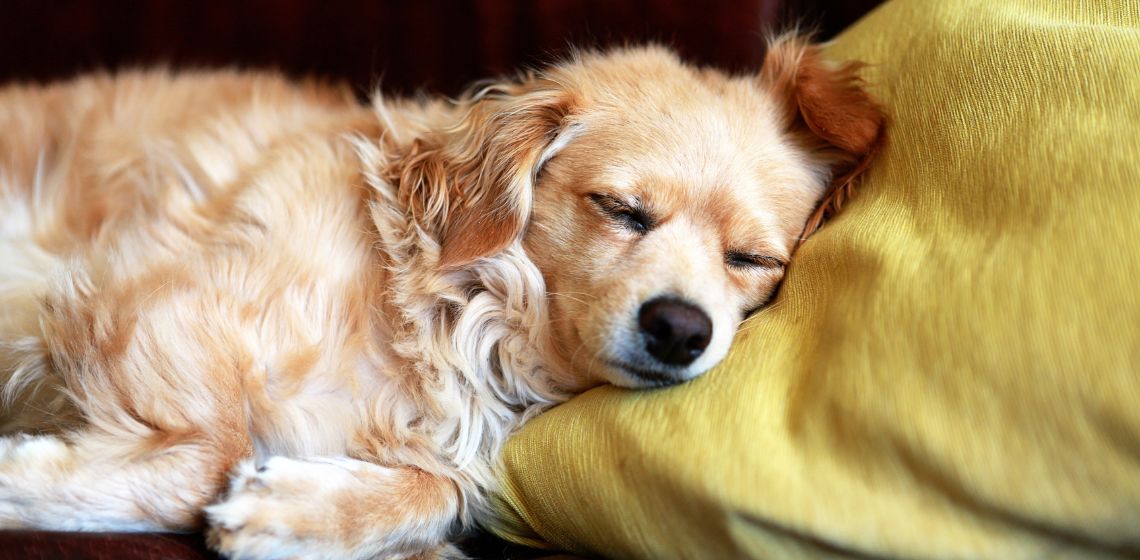Table of Contents
Fall Brings Shorter Days and Less Outdoor Activity
As we transition from summer to winter, the days get shorter and the temperature starts to drop. As it gets colder, you will need to shorten your walks or even decrease their frequency. This means less outdoor time and daylight. According to the American Kennel Club, there is no scientific evidence that dogs experience SAD or seasonal affective disorder. However, the decrease in outdoor physical exercise and daylight that comes with seasonal changes may still affect your pet in other ways.
Without adequate physical exercise and mental stimulation, pets are more likely to experience behavioral problems such as anxiety or to exhibit destructive behavior. This need for physical exercise and mental stimulation holds true regardless of seasonality.
I also recommend consulting your veterinarian because your pet may have medical conditions or individual concerns that make thermoregulation more difficult. For example, dogs with hypothyroidism have a harder time controlling their body temperature. Additionally, certain medical conditions, like arthritis, are exacerbated by colder weather and decreased movement.
Simulating Daylight and Creating Microenvironments
As the days get shorter, it is helpful for you and your pet to continue to simulate a fairly consistent light and dark cycle. Consider using window treatments that encourage natural sunlight to enter your home. You may also want to use artificial lighting, such as light boxes, to make the seasonal changes less drastic.
It is also important to create microenvironments in your home so that your pet can adjust their body temperature when necessary. For example, each pet should have multiple potential sleeping areas of varying temperatures. One pet bed could be positioned near a sunny window whereas another could be placed in a cooler, shaded area.
Encouraging Indoor Movement and Activity
Physical exercise is necessary to maintain a healthy body weight as well as for your pet’s overall health.
Depending on your pet’s size, continue to provide physical exercise indoors if possible. Remember to move any dangerous furniture with sharp edges out of the way. For cats, intricate cat trees, wall set-ups, or playgrounds are a great way to encourage movement.
If your pet has pre-existing mobility issues, you may want to work with your veterinarian regarding indoor physical therapy exercises you can do in your home. Additionally, if your pet has difficulty with steps, a pet ramp may be a helpful alternative to add to your home.
Work with your veterinarian to adjust your pet’s food portions if necessary during less active times to avoid weight gain since this can worsen orthopedic issues and overall health. Conversely, during colder months, your pet actually uses more energy to balance their temperature and may need more calories during these times.
Get Creative With Indoor Pet Activities
During extreme weather conditions, you and your pet will have to spend more time indoors. To prevent boredom and other behavioral issues, like anxiety, you will need to provide your pet with adequate mental stimulation.
Having a variety of toys or even puzzles is a great way to keep your pet mentally engaged and entertained.
Chew toys are an effective way to prevent your dog from exhibiting destructive behavior but make sure you choose safe options. I recommend avoiding rawhides or any raw treats since raw foods carry a significantly higher risk of foodborne illness for your pets. Furthermore, these infectious agents, such as Salmonella and E. coli, can also infect you and your family.
Additionally, you will want to make sure your dog cannot swallow the chew toy or treat whole or in large pieces since this poses a foreign body risk which can lead to intestinal obstruction. You will also want to avoid chew toys or treats that are too hard since this can fracture your pet’s teeth.
Although we cannot control the seasons, we can make adjustments to make the changes less severe and still enjoyable for our pets.

Dr. Amanda Takiguchi received her Doctor of Veterinary Medicine degree at Colorado State University. After that, she completed additional training at Texas A&M through a small animal rotating internship. Prior to veterinary school, Dr. Takiguchi studied dance and business management at Columbia University in New York City. She primarily works with dogs and cats but also loves exotic species like rabbits. Her favorite animal that has worked with is the native Hawaiian owl. When she is not promoting animal welfare, Dr. Takiguchi still loves to dance, with training in multiple styles including hip hop, ballet, and tap.








